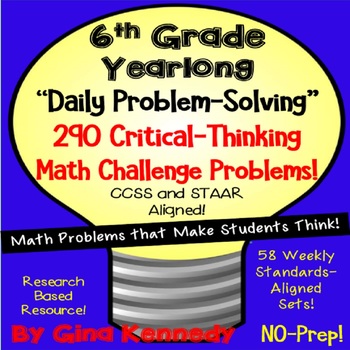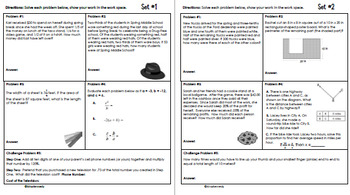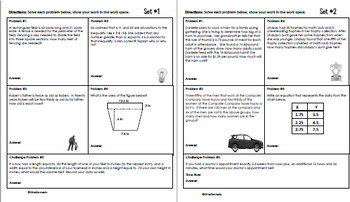6th Grade Daily Math Problem Solving, 290 Multi-Step Word Problems, All Year!
- Zip
- Easel Activity
Products in this Bundle (10)
showing 1-5 of 10 products
Description
PDF or Digital Option! BUNDLE! 6th Grade Math Multi-Step Daily Problem-Solving Practice, 58 sets (five problems in each set), 290 Multi-step Problems! Ten months of standards aligned multi-step problem solving word problems. The problems in this resource are research driven to promote the type of critical thinking skills needed to be successful on grade level state exams. The problems can be easily adapted to math journals or placed in math folders to complete one problem every day of the week. The last problem of every set is a challenge problem in which students use real-life data to solve multi-step problems. Great test-prep for standardized math exams. Great for distance learning as well!
The problems include algebra, decimals, fractions, measurement units and conversions, geometry and more! Aligned to the CCSS and STAAR math standards as well as most 6th Grade Math Curricula.
$30.00 value when each month is purchased individually.
*NOTE: Research shows that students struggle most on standardized exams with problems that involve critical thinking skills and being able to identify the correct operations as they work to solve each problem. The multi-step and challenge problems included with this resource will provide the daily practice your students need to feel confident and successful when introduced to all different types of word problems on their state exam.
All ten months are sold individually!
All new products in my store are 50% off the first 24 hours. Be sure to follow my store above to receive notice within the first 24 hours that new products are listed.
To view all of the math resources included in this bundle individually, please click on the individual links below:





